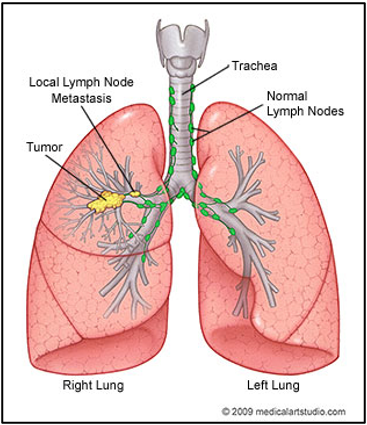Carcinogenic Health Effects
Radon is recognized as a Group A [or Class A] carcinogen by the scientific community, including the World Health Organization, the National Academy of Science’s Biological Effects of Ionizing Radiation Committee, the International Commission on Radiological Protection and the National Council on Radiation Protection and Measurement. A carcinogen is any substance, radionuclide, or radiation that is an agent directly involved in causing cancer. The US Environmental Protection Agency (EPA) maintains an electronic database that contains information on human health effects from exposure to certain substances in the environment. The database – called the Integrated Risk Information System (IRIS) – uses a rating system to describe the cancer-causing potential of a substance:
- Group A: Carcinogenic to humans
- Group B: Likely to be carcinogenic to humans
- Group C: Suggestive evidence of carcinogenic potential
- Group D: Inadequate information to assess carcinogenic potential
- Group E: Not likely to be carcinogenic to humans
| car·cin·o·gen [kahr-sin-uh-juh n] Any substance or agent that tends to produce cancer. |
Because radon is known to cause lung cancer in humans it has been identified as a serious public health problem by a number of U.S. health organizations such as the Environmental Protection Agency, Centers for Disease Control, The American Lung Association, the American Medical Association, and the American Public Health Association.
In 2005, the U.S. Surgeon General issued the following national radon health advisory to the public:
“Indoor radon is the second-leading cause of lung cancer in the United States and breathing it over prolonged periods can present a significant health risk to families all over the county. It’s important to know that this threat is completely preventable. Radon can be detected with a simple test and fixed through well-established venting techniques.”
U.S. Surgeon General
The primary risk of lung cancer from exposure to radon does not come from exposure to the gas itself, but from exposure to its decay products. When radon decays, a number of short half-life decay products are formed, primarily polonium-218, lead-214, bismuth-214, and polonium-214. Generally, when a radon atom is inhaled, it is likely that it will be exhaled again before it decays especially at low levels of radon exposure. It is also important to remember that radon is a chemically inert gas and therefore does not easily adhere to surfaces including the lung tissue and since it has a 3.8-day half-life, radon is unlikely to decay while in the lung. As the radon concentration indoors increase, the quantity inhaled can increase resulting in a greater health risk. Experts do not believe that radon gas, exclusive of its decay products, is a major contributor to the risk of cancer.
However, short-lived radon decay products (RDPs) can be breathed in directly as unattached particles or indirectly, as particles attached to smoke, dust, lint, moisture particles or biological aerosols floating in the air. Many of these attached and unattached decay products will not be exhaled and subsequently adhere to lung tissue called the bronchial epithelium. The energy released by these (alpha) particles can cause permanent damage to DNA molecules, either physically or by chemical means. Most of this damage can prevent further cell division, and eventually the cell will die. Cells also have the capability to repair some damage. In a very small portion of the irradiated cells, the damaged DNA will replicate in actively dividing cells, which may induce lung cancer (Figure 1-2). This exposure to radon and RDPs does not mean that you necessarily will contract lung cancer, but exposure increases that risk. Polonium-218 and Polonium-214 both decay as alpha emitting particles, which deposit their energy over a very short distance. On the other hand, beta and gamma radiation deposit their energy over greater distances. For radiation protection purposes alpha particles are considered to be 20 times as harmful inside the lungs as the same energy of either gamma or beta radiation. Thus, polonium-218 and polonium-214 contribute most of the dose responsible for lung cancer.

